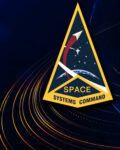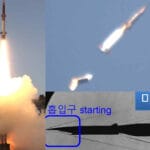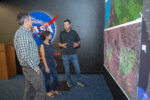In a significant milestone for commercial space-based meteorology, PlanetiQ has secured a $59 million contract from the U.S. National Oceanic and Atmospheric Administration (NOAA) to provide satellite-based weather data through 2029. This marks the largest single commercial purchase of satellite weather data by NOAA to date and underscores the growing role of private-sector capabilities in national environmental monitoring and defense-relevant forecasting.
Contract Overview and Strategic Significance
The five-year Indefinite Delivery/Indefinite Quantity (IDIQ) contract was awarded under NOAA’s Commercial Weather Data Program (CWDP), which aims to integrate commercial environmental observations into operational weather models. PlanetiQ will deliver Global Navigation Satellite System Radio Occultation (GNSS-RO) data—an increasingly critical input for numerical weather prediction models used by both civilian agencies and defense planners.
The $59 million ceiling represents not only NOAA’s largest single award for commercial satellite weather data but also a strategic shift toward leveraging private-sector innovation to augment government-owned systems such as COSMIC-2 and JPSS. The contract runs through March 2029 and includes multiple task orders that will be issued based on performance metrics and evolving agency requirements.
Technology Behind the Data: GNSS Radio Occultation
GNSS-RO is a remote sensing technique that measures changes in radio signals from navigation satellites (e.g., GPS, Galileo) as they pass through Earth’s atmosphere. These signal distortions are used to derive high-resolution vertical profiles of temperature, pressure, and humidity—parameters essential for accurate global weather forecasting.
Unlike passive radiometers or infrared sensors which can be degraded by cloud cover or precipitation, GNSS-RO provides all-weather capability with sub-kilometer vertical resolution. It is particularly valuable over oceanic regions and polar areas where traditional radiosonde coverage is sparse or nonexistent. The technique also supports ionospheric monitoring relevant to space weather forecasting—a growing concern for both civilian infrastructure resilience and military operations dependent on reliable communications and navigation.
PlanetiQ’s Constellation and Mission Capabilities
PlanetiQ currently operates its “GNOMES” (GNSS Navigation and Occultation Measurement Satellites) constellation in low Earth orbit (LEO). Each GNOMES satellite is equipped with the company’s proprietary Pyxis RO sensor capable of tracking signals from all major GNSS constellations simultaneously—GPS (USA), Galileo (EU), GLONASS (Russia), BeiDou (China), QZSS (Japan), and NavIC (India).
This multi-GNSS capability allows PlanetiQ to generate over 10,000 high-quality RO soundings per day per satellite—a significant increase over legacy systems like COSMIC-1/2. The company aims to deploy up to 20 satellites by the end of this decade, enabling near-global coverage with revisit times suitable for real-time assimilation into operational forecast models such as those run by NOAA’s National Weather Service or the U.S. Air Force’s Weather Wing.
Defense Relevance: Dual-Use Value of RO Data
While primarily aimed at improving civilian forecasts, GNSS-RO data has clear dual-use benefits for defense applications:
- Tactical Forecasting: Accurate atmospheric profiles improve mission planning for air operations, UAV routing, artillery trajectory modeling, and amphibious landings.
- C4ISR Integration: Enhanced situational awareness supports command-and-control decisions across joint operations in contested environments where terrestrial sensors may be degraded or denied.
- Space Weather Monitoring: Ionospheric measurements assist in predicting disruptions to SATCOM links or GPS-dependent systems caused by solar activity—critical for precision navigation weapons or ISR platforms.
- Denying Adversary Advantage: By maintaining superior forecast accuracy globally—including denied or adversarial regions—U.S. forces can reduce operational risk while degrading adversary planning based on less reliable meteorological intelligence.
A Growing Market for Commercial Environmental Intelligence
The PlanetiQ award reflects broader momentum within the CWDP framework. In recent years, NOAA has expanded its procurement of commercial RO data from vendors such as Spire Global and GeoOptics following successful pilot programs demonstrating equivalent or superior quality compared to government sources.
The Department of Defense has also shown increasing interest in leveraging these datasets via interagency agreements with NOAA or direct contracting mechanisms through DIU or AFWERX channels. As climate volatility increases demand for high-fidelity environmental intelligence—from Arctic basing strategies to typhoon response logistics—the market opportunity for dual-use space-based sensing continues to grow.
Next Steps: Task Orders & Performance Metrics
The IDIQ structure allows NOAA flexibility in issuing task orders based on demonstrated performance against key parameters such as latency (<3 hours), horizontal/vertical resolution thresholds, geographic coverage consistency, calibration standards compliance (e.g., WMO guidelines), and system uptime reliability (>95%).
If PlanetiQ meets these benchmarks consistently across initial delivery phases starting Q1 FY2026, it could unlock follow-on task orders worth tens of millions more within the contract ceiling—potentially positioning it as a long-term partner not only for NOAA but other federal stakeholders including NASA Earth Science Division or DoD METOC units.
Conclusion
This landmark award positions PlanetiQ at the forefront of a rapidly evolving sector where commercial innovation is reshaping how governments gather critical atmospheric intelligence. With its advanced GNOMES constellation delivering high-density global RO soundings—and strong alignment with both civil forecasting needs and military operational demands—PlanetiQ exemplifies how new space actors are becoming indispensable contributors to national security infrastructure via precision environmental sensing from orbit.









